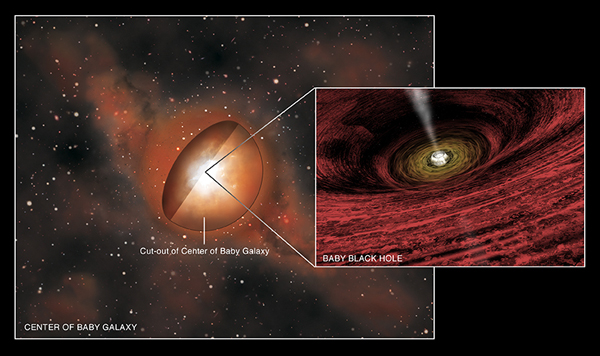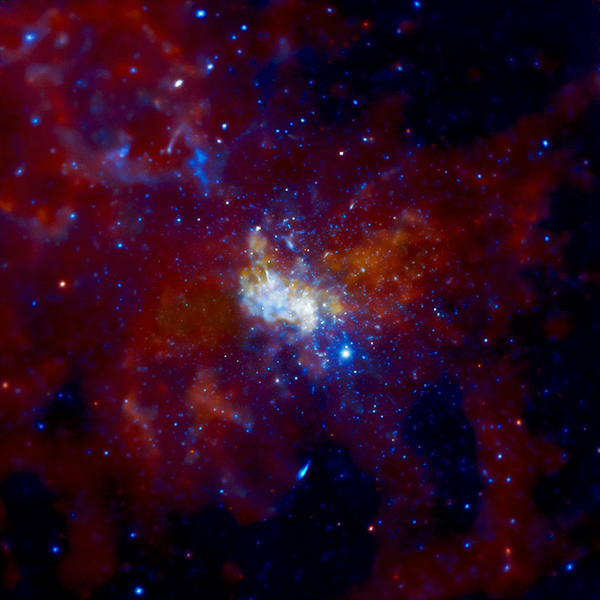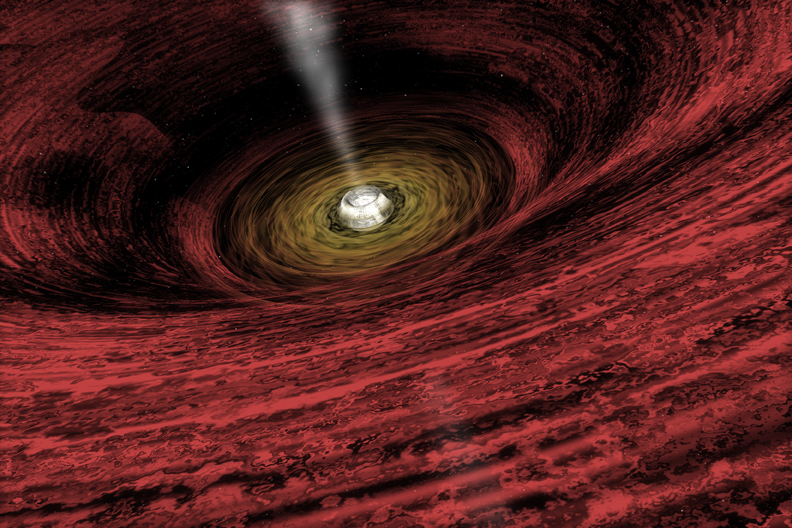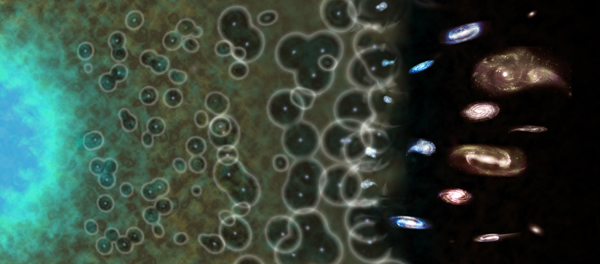NASA TV press conference:
NASA's Chandra Finds Massive Black Holes Common in Early Universe
Wednesday, June 15, 2011 (1:00 p.m. Eastern)
Using the deepest X-ray image ever taken, astronomers found the first direct evidence that massive black holes were common in the early universe. This discovery from NASA's Chandra X-ray Observatory shows that very young black holes grew more aggressively than previously thought, in tandem with the growth of their host galaxies.
A video will air on NASA Television on June 15 (check the NASA TV schedule for additional times and information).
Panelists:
 |
Ezequiel Treister, (Einstein Fellow, University of Hawaii) |
 |
Kevin Schawinski, (Einstein Fellow, Yale University) |
 |
Priyamvada Natarajan, (Professor, Yale University) |
 |
Mitch Begelman, (Professor, University of Colorado) |
Bios Page
Graphics:
Figure 1. Motion Graphic: This sequence of images zooms into the 4-million-second exposure of the Chandra Deep Field South.

Figure 2. Illustration of galaxy in early universe

Figure 3. Illustration of the center of this young galaxy.

Figure 4.Sagittarius A* image.
Figure 5. Animation: This animation shows an artist's impression of a distant galaxy and its hidden black hole found in an epoch when the Universe was less than one billion years old.

Figure 6. Close-up of supermassive black hole.

Figure 7. Reionization in the early universe
Supplementary Graphics

Figure 1. Chandra 4Ms CDFS image.

Figure 2. Chandra/HST composite and Two Stacked Chandra images
Additional Information
Paper Title: "Black Hole Growth in the Early Universe is Self-Regulated and Largely Hidden From View"
Full Author List: Ezequiel Treister, Kevin Schawinski, Marta Volonteri, Priyamvada Natarajan, and Eric Gawiser
Scientist Contact Information:Ezequiel Treister: treister@ifa.hawaii.edu
Kevin Schawinski: kevin.schawinski@yale.edu
Priyamvada Natarajan: priyamvada.natarajan@yale.edu
Mitch Begelman: mitch@jila.colorado.edu
Links:
Photo Album
Press Room
Image Captions


